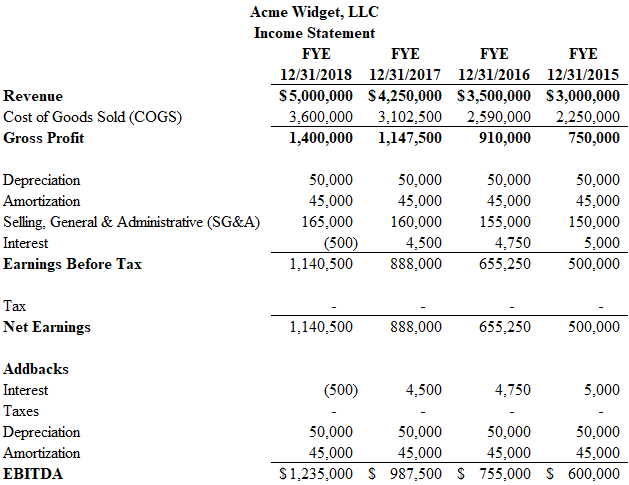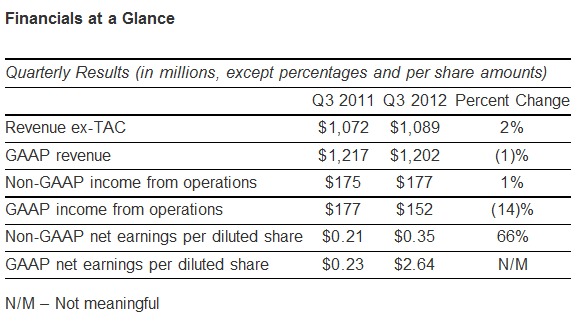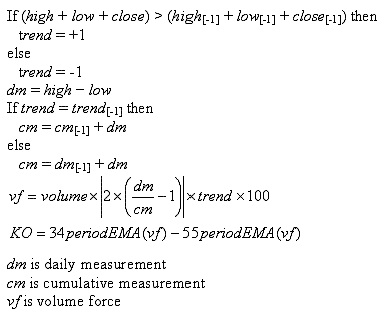
Thus, event studies focusing on announcement effects for a short-horizon around an event provide evidence relevant for understanding corporate policy decisions. Conceptually, the gap between the underlying real growth rate, likely closer to Maddison’s estimate rather than the official estimate, and the reported ‘real growth rate’ by the statistical authorities is composed of three major biases. what is price effect We propose a national accounts approach to addressing the first two biases. Further problems arise, however, when attempting to extrapolate from these studies to estimate the house price effects of future increases in flood risk due to climate change. The results from existing research are mixed, however, and caution is needed when interpreting the implications of a particular study.
Study reveals ideal first offer in negotiations – Phys.org
Study reveals ideal first offer in negotiations.
Posted: Mon, 07 Aug 2023 12:27:35 GMT [source]
This would exacerbate the horizontal inequity implicit in the granting of vouchers to some but not all low-income households – poor nonrecipients may be left even worse off than they would have been had the programme not existed. This is also true for the large share – over one-third in some cities in years when markets are tight – of those awarded vouchers who end up returning them because they cannot secure qualifying units. In Section 2, we briefly review the event study literature and describe the changes in event study methodology over time.
Limitations of revenue-maximizing strategies
Normally, when the income of the consumer increases, he purchases larger quantities of two goods. In Figure 12.14 he buys RA of Y and OA of X at the equilibrium point R on the budget line PQ. As his income increases, he buys SB of Y and OB of X at the equilibrium point S on P1, Q1, budget line and still more of the two goods TC of Y and ОС of X, on the budget line P2Q2. Usually, the income consumption curve slopes upwards to the right as shown in Figure 12.14. The effects of prices on consumers and producers can be explained using the law of demand and the law of supply. Learn more about the nature of pricing and the response of consumers and producers to changes in prices.
- We use now the What–if Analysis Data Table tool to build and plot the indifference curves map within the Excel, together with the consumer equilibrium point.
- If there is a change in the price of one good (generally major good in a complementary relation, like the price of a car in car and petrol) then the demand for its complementary goods will change in the opposite direction.
- In Section 2, we briefly review the event study literature and describe the changes in event study methodology over time.
- The second type of ICC curve may have a positive slope in the beginning but become and stay horizontal beyond a certain point when the income of the consumer continues to increase.
- Calculating the substitution effect requires you to isolate the impact of a change in relative prices.
Now, suppose the price of X is reduced such that the budget line shifts to AB1 and the consumer reaches equilibrium at point E1 on IC2. The total price effect is, thus, X1X2 which can be split into substitution effect and income effect. Substitution effect is always negative due to which the consumer buys more of X when its price falls. Finally, the price effect can also be the result of a change in interest rates, which is the case for the bond market. The change in demand of a product or a service due to change in the price of it is known as price effect.
7 Cross-sectional tests
Dozens of papers have now explicitly studied statistical properties of event study methods. Hence, democracies would be more likely to liberalize, except, of course, if the majority of the population (or the median voter) stands to lose from the move. However, a democracy is a mechanism to solve social conflicts (about taxation) that would otherwise require the resort to inefficient solutions such as financial repression and the inflation tax. From this viewpoint, capital controls would be less valuable for policymakers in democratic countries. Moreover, if incumbents oppose liberalization for the sake of their protected rents, greater domestic political and economic competition will dilute those rents and make them less averse to integration (Rajan and Zingales, 2003). Thus, for an inferior good, both income effect and substitution effect are negative but negative substitution effect outweighs negative income effect.
The substitution of tea for coffee changes both the demand for tea and the quantity of coffee demanded. Economists measure the degree of substitution by looking at the cross price elasticity of two products — which is the extent that a price change in one product alters the demand for another. If one product is very similar to another product, it is called a close substitute. The closer the substitutes are, the larger the substitution effect will be. Although Maddison’s work is superior to those of others who also use the physical indicator approach, it shed no light on the role of prices in China’s growth.
If the consumer purchases more of a commodity following an increase in real income (due to a fall in the price of commodity) income effect is said to be positive. It will be negative when a consumer purchases less of a commodity following a fall in real income. If the income of the consumer increases his budget line will shift upward to the right, parallel to the original budget line. On the contrary, a fall in his income will shift the budget line inward to the left. The budget lines are parallel to each other because relative prices remain unchanged.
- The substitution effect is a concept in microeconomics that describes how consumers substitute away from a given good — that is buy less of it and more of a substitute good — if its price increases.
- Another way of looking at the relation between capital controls and macro-policy is through the lens of the ‘policy trilemma,’ as summarized by Obstfeld and Taylor (2004).
- AB is the initial budget line and IC1 is the initial indifference curve.
- For example, consider a case where platforms 1 and 2 only overlap on side A of the market, and the demand on side A is increasing in the number of units sold on side R.
On the other hand, this concept also applies to financial securities that are exposed to both internal and external realities. For example, a company with interests in a country that is experiencing political turmoil will see the price of its stocks adversely affected by this scenario if the business is very exposed to that particular location. Marketers use price effect or also sometimes discounting to manipulate the demand; however it is not known to be a sustainable method of doing so.
What Does Price Effect Mean?
Woo (1996) and Maddison (1998) went further, suggesting that the institutional mishandling of constant and current prices began at the enterprise level and then influenced the entire system. These studies nurtured a hidden price effect hypothesis for China’s official growth rate and encouraged a search for alternative physical indicators to circumvent the price effect. The Hicks-Allen analysis uses the method of indifference curve and budget line to analyze the demand curve for a product. The indifference curve gives the combination of two products that a consumer will choose. Any point on an indifference curve will give the same amount of satisfaction.
Everything Divided By 7 Million: Popular Bitcoin Price Heuristics Are … – Nasdaq
Everything Divided By 7 Million: Popular Bitcoin Price Heuristics Are ….
Posted: Sun, 06 Aug 2023 12:00:00 GMT [source]
It turns out that in many merger cases antitrust authorities use market share as an important input for estimating the possible anticompetitive effect of the potential merger in question. More generally, strategic complementarities and cultural homogeneity in trade economies will typically hold, e.g., with increasing returns in production and market power. Maystre, Thoenig, Olivier and Verdier (2009), who study the transmission of a preference for a specific differentiated good whose varieties are produced under monopolistic competition provide an example. In this context, the larger the size of the group with a preference for a good, the larger the market size and the entry of firms producing differentiated varieties of that good. Increased varieties in turn make it relatively more attractive to acquire and transmit preferences for this good, leading once again to strategic complementarity. Abnormal returns also vary cross-sectionally because the degree to which the event is anticipated differs by firm.
Comprehensively, the income effect looks at how rising or falling income effects demand for goods and services in the economy. Both effects have demand as the central component but the difference is the isolated indirect variable affecting the direct variable which is demand. Calculating the substitution effect requires you to focus only on that former part of the puzzle, ignoring the question of what you would buy with the extra money. To isolate the substitution effect, we could give you $75 (the cost of the old consumption bundle at the new prices) and see what you buy.
Relation to marginal revenue
In Section 3 we discuss how to use events studies to test economic hypotheses. We also characterize the properties of the event study tests and how these properties depend on variables such as security volatility, sample size, horizon length, and the process generating abnormal returns. Section 4 is devoted to issues most likely encountered when conducting long-horizon event studies. The main issues are risk adjustment, cross-correlation in returns, and changes in volatility during the event period.

We provide many references and borrow heavily from the contributions of published papers. Two early papers that cover a wide range of issues are by Brown and Warner (1980, 1985). More recently, an excellent chapter in the textbook of Campbell, Lo, and MacKinlay (1997) is a careful and broad outline of key research design issues. These standard references are recommended reading, but predate important advances in our understanding of event study methods, in particular on long horizon methods. We provide an updated and much needed overview, and include a bit of new evidence as well.
Industrial incumbents will do so because they will only be able to survive competition by investing more, for which they need access to a larger pool of finance. Financiers will want to expand their clientele (once relationship-based credit is competed away), and as new clients will be less well known (and possibly riskier), they will also press for better disclosure and impartial enforcement. The second type of ICC curve may have a positive slope in the beginning but become and stay horizontal beyond a certain point when the income of the consumer continues to increase.
It also refers to the effect that any event has on a product or service’s price. When economies are expanding or peaking, income usually rises with these economic cycles as companies report higher profits. A demand curve plots the price on the y-axis and demand quantity on the x-axis. One of the most basic ways is to look at marginal propensity to consume (MPC). In the monthly Personal Income and Outlays report, data is provided on income and expenditures.

Harrison et al. (2001) and Bin and Polasky (2004) reported negative impacts on house prices, whereas Tobin and Montz (1989) estimated prices to be higher following a flood, possibly due to postflood renovation and quality improvement. That some studies (e.g., Bin and Polasky, 2004) have found evidence of price falls for properties on recognised floodplains following a flood does at least suggest that flood risks are only partially capitalised into property values. As usual, the substitution effect (i.e., the movement along the same indifference curve) is negative and is measured by the distance X1X3. Negative substitution effect causes quantity demanded to rise (fall) when price falls (rises). It is due to the negative income effect that quantity demanded falls (rises) when real income rises (falls).
It means the rise and fall in the price do not affect the demand for necessities. The price consumption curve in the case of neutral goods is parallel to X-axis. Here, we take the combination of normal good (Good X) and an essential or neutral good (Good Y).
Changing prices alter those available combinations of goods and force consumers to find the new bundle, among the new set of possibilities, that provides the maximum utility. Calculating the substitution effect requires you to isolate the impact of a change in relative prices. Changing the price of a good always forces the buyer to reevaluate the combination of goods that will maximize their utility (the total net benefits that something provides). The substitution effect is all about how people change their purchases of one product in reaction to a price change of another good. At these prices, potential customers will weigh their preferences against these different prices. If someone orders Chinese food in this scenario, they are revealing that it’s worth the extra $5 for them.

In this case, paying a higher price increases the psychological investment of the user, boosting effectiveness. Thus, it was found that people who are charged full price for a drink supposed to boost mental acuity perform better on mental tasks than those who are told they had received a price discount. Whether such placebo–price effects are at play for public health goods remain to be directly tested.